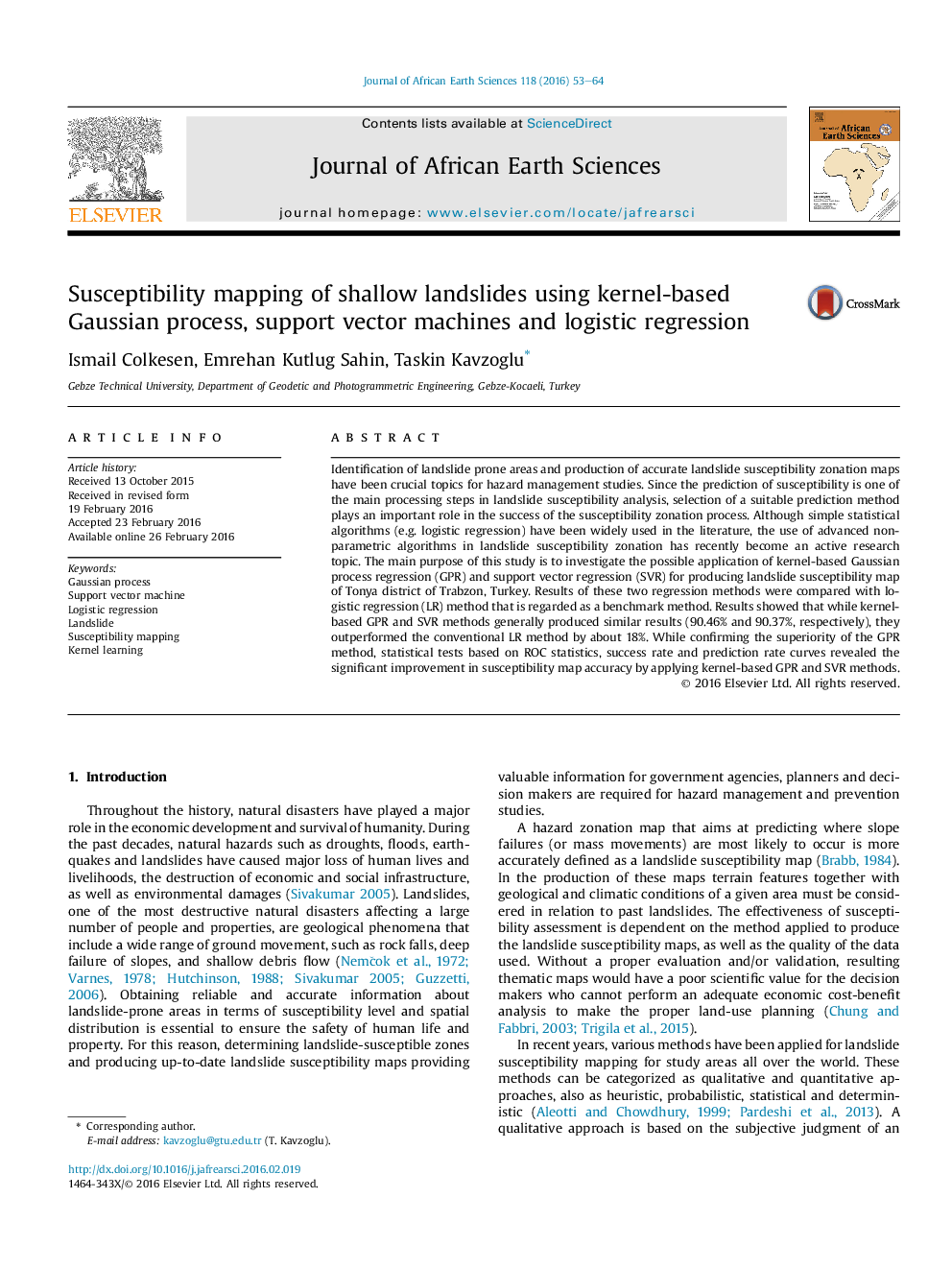| Article ID | Journal | Published Year | Pages | File Type |
|---|---|---|---|---|
| 4728425 | Journal of African Earth Sciences | 2016 | 12 Pages |
•Performances of kernel-based algorithms were compared for susceptibility mapping.•Gaussian process (GPR) was employed landslide susceptibility maps.•SVR and GPR methods outperformed the conventional LR method.•Kernel-based algorithms can significantly improve the prediction accuracy.•Statistical comparisons conducted using ROC, success and prediction rate curves.
Identification of landslide prone areas and production of accurate landslide susceptibility zonation maps have been crucial topics for hazard management studies. Since the prediction of susceptibility is one of the main processing steps in landslide susceptibility analysis, selection of a suitable prediction method plays an important role in the success of the susceptibility zonation process. Although simple statistical algorithms (e.g. logistic regression) have been widely used in the literature, the use of advanced non-parametric algorithms in landslide susceptibility zonation has recently become an active research topic. The main purpose of this study is to investigate the possible application of kernel-based Gaussian process regression (GPR) and support vector regression (SVR) for producing landslide susceptibility map of Tonya district of Trabzon, Turkey. Results of these two regression methods were compared with logistic regression (LR) method that is regarded as a benchmark method. Results showed that while kernel-based GPR and SVR methods generally produced similar results (90.46% and 90.37%, respectively), they outperformed the conventional LR method by about 18%. While confirming the superiority of the GPR method, statistical tests based on ROC statistics, success rate and prediction rate curves revealed the significant improvement in susceptibility map accuracy by applying kernel-based GPR and SVR methods.
